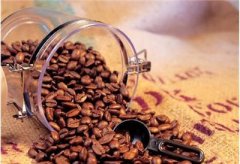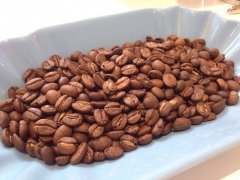The characteristics of Tanzanian Fine Coffee
The species of coffee beans in Tanzania, the local coffee species:
In the past, the coffee varieties commonly used in Tanzania were Bourbon (N.39) and Kents (KP 423). However, due to their low insect resistance and disease resistance, the quality of the coffee produced could not meet the requirements of high-quality coffee, not to mention the world-famous UTZ and Fair trade certification. With the introduction of new techniques and varieties for the cultivation of coffee beans, farmers in the coffee producing areas of southern Tanzania prefer to use the improved varieties of Tanzanian coffee beans, SC3,SC11 and SC 14.

The following is a brief introduction to the species and characteristics of each Tanzanian coffee bean:
SC3
Retain the most primitive planting methods
Resistant to CBD and CLR
Suitable for sale (beans are uniform, thick, good-looking and attractive)
Rich in fruit
The output is stable every season.
Tender green, shiny leaves
The flavor is pleasant
Grow fast
Many buds that can be used as seedlings
Rich in output
The length of the branch from the main trunk to the other branch is about 3 inches.
The length of the stem node is about 3 inches.
SC11
Retain the most primitive planting methods
The length of branched stem nodes is 3 inches.
The length of the stem node is 1.5-2 inches.
A rich output
Many buds that can be used as seedlings
Suitable for sale (big beans, heavy beans, good appearance, attractive)
The flavor is pleasant
Grow fast
Tender green, shiny leaves
SC14
Retain the most primitive planting methods
Medium and high yield
Resistant to CBD and CLR
The length of the branch from the main trunk to the other branch is about 3 inches.
The length of the stem node from one flower to another is about 3-4 inches.
Suitable for sale (big beans, heavy beans, good appearance, attractive)
Rich in fruit
The output is stable every season.
The flavor is pleasant
A lot of buds
Tender green, shiny leaves
KP423
Medium yield
Easily influenced by CBD and CLR
Few tertiary and secondary branches-yields vary from season to season and are unstable
It is easy to be accepted by consumers, but sometimes it is necessary to pick out a large number of bad fruits.
Intact, glossy leaves
Medium number of branches
A small amount of buds that can be used as seedlings
If you spray agricultural yao properly and effectively control CBD, there will be more abundant and attractive fruits.
The flavor is pleasant
The length of the branch from the main trunk to another branch is about 4 inches.
The length of the room between Huasu and Huasu is 2 inches.
SC9
The output is sufficient
Tender green, shiny leaves
Many buds that can be used as seedlings
The length of the branch from the main trunk to the other branch is about 6 inches.
The length of the room between Huasu and Huasu is 2 inches.
Resistant to CBD and CLR
The flavor is pleasant
Suitable for sale (large bean shape, good appearance, attractive)
The output is stable every season.
The following table shows the ranking of farmers' preference for coffee varieties.
Species and grades of coffee beans in Tanzania
Mbinga producing area (not up to the best standard)
1.SC3 1
2.SC11 2
3.SC14 3
4.KP 423 'Local' 4
5.SC 9 N/A
The following table shows the comparison of the characteristics of various varieties of Tanzania coffee beans.
Total grade of standard coffee varieties
SC3 SC11 SC14 KP423' Local'
1. 5 4 4 3 with high yield
two。 Salable 5 5 5 4 19 2
3. Pest resistance 5 5 5 3 18 3
4. Flavor 5 5 5 20 1
5. Stable output 5 5 4 3 17 4
6. The growth rate is 4 4 5 3 16 5
7. Many branches-for new planting 5 5 4 3 17 4
Total 34 33 32 24
Level 1 2 3 4
Note: 1-poor; 2-medium-lower; 3-medium; 4-good; 5-excellent
All varieties of Tanzanian coffee beans perform well in terms of flavor and sales. The new breed of coffee gets high marks in all categories. The one with the lowest score was 7. 5%. Many branches-for new planting, 1. High yield and 6. 5%. It grows fast. The local variety draw got a medium score in each evaluation, which proved that there were great differences between the new variety and the old variety in these aspects.
Important Notice :
前街咖啡 FrontStreet Coffee has moved to new addredd:
FrontStreet Coffee Address: 315,Donghua East Road,GuangZhou
Tel:020 38364473
- Prev

Fine Puerto Rico Coffee Bean Introduction Puerto Rico Coffee Taste Characteristics of Puerto Rico Coffee
Puerto Rico Coffee-King's Coffee Puerto Rico, a small country in South America, consists of a series of scattered islands, each season like spring, flowers and plants are abundant, like God's bead chain, a slight rotation can see the glory of heaven. The main island of Puerto Rico, only 8959 square kilometers, is a small point on the map, but like a magnified bonsai, the island is mountainous
- Next

Comment on the flavor of Nicaraguan boutique coffee introduction of Nicaraguan boutique coffee Nicaraguan coffee
Nicaraguan coffee Nicaragua coffee flavor characteristics: moderate acidity, fragrant and delicious. Nicaraguan coffee of high quality is in the forefront of coffee beans in the world and enjoys a good reputation. Its particles are moderate in size, mild in taste and very aromatic and mellow. Nicaragua is located in central Central America, bordered by the Pacific Ocean to the west and the Caribbean Sea to the east. The highlands in the north and the coastal plains in the east
Related
- Detailed explanation of Jadeite planting Land in Panamanian Jadeite Manor introduction to the grading system of Jadeite competitive bidding, Red bid, Green bid and Rose Summer
- Story of Coffee planting in Brenka region of Costa Rica Stonehenge Manor anaerobic heavy honey treatment of flavor mouth
- What's on the barrel of Blue Mountain Coffee beans?
- Can American coffee also pull flowers? How to use hot American style to pull out a good-looking pattern?
- Can you make a cold extract with coffee beans? What is the right proportion for cold-extracted coffee formula?
- Indonesian PWN Gold Mandrine Coffee Origin Features Flavor How to Chong? Mandolin coffee is American.
- A brief introduction to the flavor characteristics of Brazilian yellow bourbon coffee beans
- What is the effect of different water quality on the flavor of cold-extracted coffee? What kind of water is best for brewing coffee?
- Why do you think of Rose Summer whenever you mention Panamanian coffee?
- Introduction to the characteristics of authentic blue mountain coffee bean producing areas? What is the CIB Coffee Authority in Jamaica?

